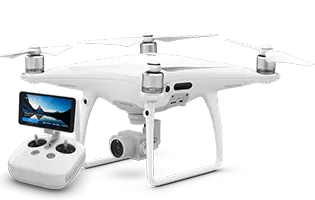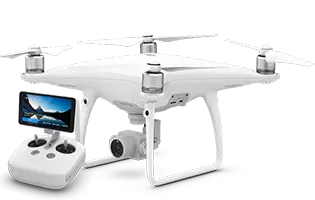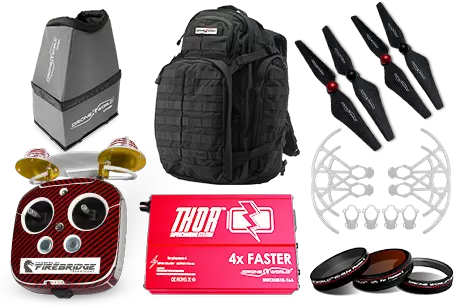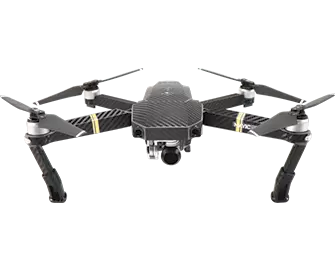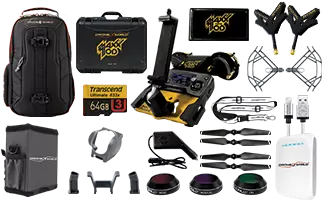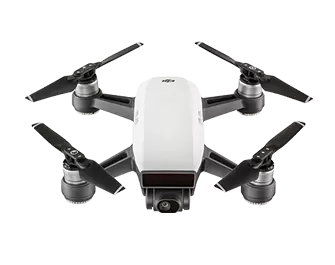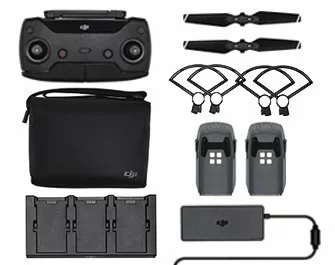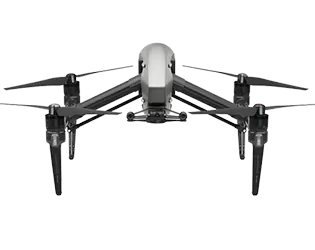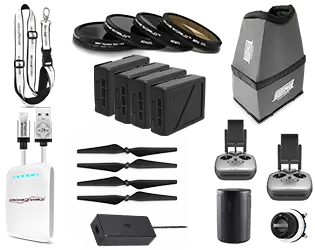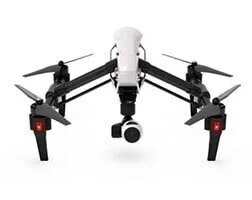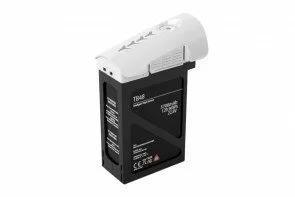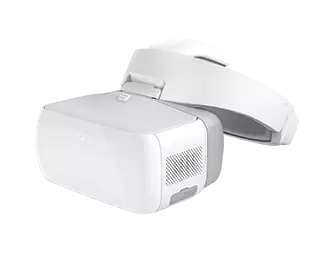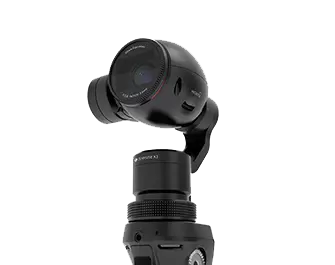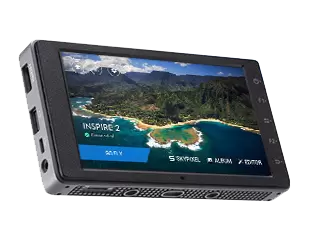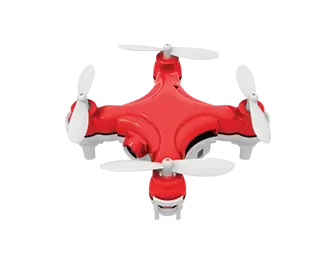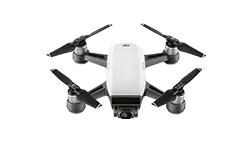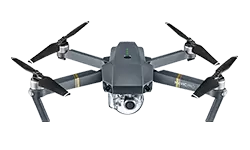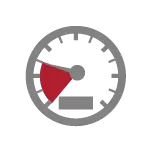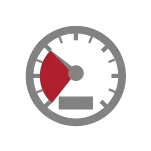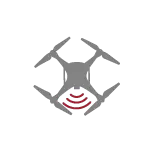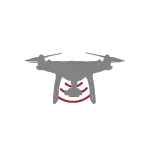DJI Spark vs Yuneec Breeze vs DJI Mavic Pro
| SPARK |
 MAVIC PRO MAVIC PRO
|
|
The DJI Spark has taken the place of the DJI Mavic as the company's smallest, most compact drone. The two are comparable to the Yuneec Breeze, a mini drone well known for its ability to record 4K video. In this comparison we seek to review the similarities differences among these three aircraft, and provide consumers with the necessary insights to make an informed purchasing decision. (If you like this comparison, be sure to also check out our Spark Review and DJI Spark vs. Yuneec Breeze pages.
Size and Weight
The first thing you'll spot about these three drones is how they differ in size. The Spark is the smallest, being the size of a soda can, with the Breeze the next largest, and finally the Mavic. Of note is that the Mavic can be folded up to a size that is less wide than both of the other drones, making it the most portable drone overall.
Size
Spark 2.1(H) x 5.6(W) x 5.6 (L) inches
Breeze 2.5 (H) x 7.7 (W) x 7.7 (L) inches
Mavic 3.5 (H) x 12 (W) x 11 (L) inches
All of the drones are remarkably light, making them ideal for travel. Both the Spark and Breeze weigh less than a pound, and the Mavic is not much heavier, registering just slightly more than 1.5 pounds.
Weight:
Spark 0.66 pounds (300 g)
Breeze 0.84 pounds (385 g)
Mavic 1.62 pounds (734 g)
Our Pick: DJI Spark is the most compact drone when ready to fly, and the lightest of the bunch. It gets our vote for size and weight.
Camera
The camera is a crucial category, as these drones are largely used for stunning photography and videography. DJI is known for manufacturing great cameras, and even though the Spark's camera resolution (12MP and FHD 1920x1080) comes up short against the Breeze (13 MP and 4K video), the onboard 2-axis gimbal picks up the slack. Ultimately the gimbal makes all the difference, resulting in richer photos and sharper videos when compared to the Breeze.The gimbal on the Breeze is simply of poorer quality than the Spark, and the difference is quite noticeable, according to many reviewers.
The Mavic is the best of the bunch, recording 4K video at 30 frames per second and 12.71 MP photos. It also has the biggest shutter speed range, allowing drone pilots to create more blur and capture subjects better in low lighting conditions. Spark matches Mavic stride for stride in sensor size (1/2.3"), with the Breeze lagging behind (1/3.06"). Given the information available for Aperture and Max Video Bitrate, the Mavic also wins these categories, as seen below:
| Spark | Breeze | Mavic Pro | |
| Sensor Size | 1/2.3" | 1/3.06" | 1/2.3" |
| Film Rate | 12 MP and FHD 1920x1080 | 13 MP and 4K Video | 12.35 MP and 4K Video |
| Shutter Type | Electronic | Electronic | Electronic |
| Shutter Speed | 2-1/8000s | 1/30-1/8000s | 8s-1/8000s |
| Aperture | F/2.6 | (Unknown) | F/2.2 |
| Max Video Bitrate | 24 mbps | (Unknown) | 60 mbps |
| Camera Image | 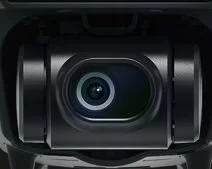 |
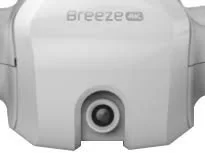 |
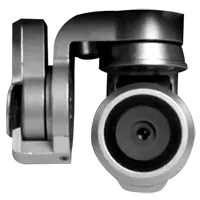 |
Our Pick: The Mavic Pro is simply a cut above the rest, with the best aperture, shutter speed, and gimbal of the three.
Speed and Performance
In terms of speed and flight time, the Mavic Pro is again the king of the trio, capable of reaching 40 mph and flying for 27 minutes. The Spark is up next, cranking out 31 mph for 16 minute flights. Bringing up the rear is the Breeze, clocking a maximum speed of 11 mph and flying for a meager 12 minutes. The Breeze is made out of a lightweight plastic, and many drone pilots have noted that it feels less durable than the components for the Mavic and the Spark. This can be problematic in any sort of crash, as you could experience severe damage to the aircraft.
Our Pick: The Mavic Pro again is the cream of the crop, boasting the best top speed and a stellar amount of flight time.
Flight Modes
All of the drones include fun and useful flight modes for easily navigating the skies, but the DJI drones give pilots more flight modes to choose from. The traditional DJI flight modes that both the Spark and Mavic have are Active Track, TapFly, and Terrain Follow. The Spark also boasts some exclusive new flight modes. The QuickShot flight modes exclusive to the Spark are:
- Rocket- Ascend with the camera pointing downward, revealing a unique perspective from above.
- Dronie- Fly backward and upward, with the camera locked on your subject, creating an epic shot that captures the big perspective of the world around the subject.
- Circle- Keeps the subject locked in the center of the frame, as the Spark automatically flies a circle around it.
- Helix - Starts close to the subject before flying up, away, and around in larger and larger circles.
The Breeze, on the other hand, depends on 5 automated flight modes:
- Selfie Mode - Positions the Breeze to snap an aerial selfie.
- Pilot Mode - Allows pilot to fly the drone manually.
- Orbit Mode - Breeze orbits around pilot or an external object.
- Journey Mode - Breeze uses camera pitch to calculate the trajectory of the aircraft to fly away from subject and then back.
- Follow Me Mode - Breeze uses GPS to track your movement.
On the surface, the Breeze appears to be fairly comparable to the Spark and Mavic, but where it falls significantly short is its lack of gesture control. Onboard the Spark is a forward-facing sensor that utilizes face recognition software, and allows for flying without the use of a remote control. Pilots can control the Spark by moving their palm up, down, left, right, forward, and backward. By making a camera motion with your hands you will engage the Spark camera for a selfie. Waving one hand activates ActiveTrack, meaning the Spark will track you as you move. Wave two hands to beckon the Spark back to you and place your palm up to allow the sensors underneath to inentify you and land precisely in your hand. Learn more about how the unique Gesture Controls on the Spark operate by visiting our Spark Gesture Controls page.
Our Pick: With a plethora of flight modes and the innovative Gesture Controls, the Spark is the clear winner here.
Transmission Distance
The range of these three drones is a substantially large determining factor in comparing them, because they vary so widely. Leading the pack once again is the Mavic, capable of 4.3 miles with the use of OccuSync Technology. Next up is the Spark, which achieves 1.2 miles with its controller. Finally we have the Breeze, which flies up to 109 yards with its dedicated controller. These numbers definitively demonstrate how large the gap is between the Breeze and the DJI drones. The Spark has 16x the range of the Breeze, while the Mavic flies approximately 70x as far as the Yuneec selfie drone.
Without the use of a dedicated controller, the DJI drones still best their Yuneec counterpart, with the Mavic and Spark both flying up to 109 yards in distance and 54 yards in height. The Breeze only manages to attain 100 feet of distance before losing signal.
Our Pick: Thanks to OccuSync Technology, the Mavic Pro is the unanimous winner in our book.
Sensors
The Mavic again flexes its muscles with the onboard sensors that provide obstacle sensing. It can detect objects between 2-49 feet in front while traveling up to 22 mph. The Spark manages to detect objects in front between 1-16 feet while travling up to 6.7 mph. A ground sensor on the underside of the Breeze keeps track of the distance to the floor, allowing it to hover indoors more steadily than most of its competition. Unfortunately, that is the extent of the Breeze's sensors, meaning it does not come equipped with any kind of obstacle avoidance. For first time fliers and risk takers, this is a massive disappointment.
Our Pick: The Mavic Pro is the best of the best, with the highest obstacle avoidance range and the fastest maximum speed at which obstacle avoidance is operational.
Price
The cheapest of the three is of course the Yuneec Breeze, which retails for $399.99, while the controller will cost an extra $69.99. The next step up in price is the Spark, which sells for $499 without the dedicated controller. Customers can choose the FlyMore Combo for the Spark for $699 to obtain the controller, as well as extra propellers, propeller guards, an extra battery, power cable, charger, charging hub, and micro USB cable. Last but not least is the Mavic Pro, which retails for $999, with the FlyMore combo selling for $1299. The Mavic Pro FlyMore Combo includes an extra battery, batter charging hub, car charger, battery to power bank adaptor, and shoulder bag.
Our Pick: Among the three, the Mavic Pro offers the best in flight time, performance, and camera. Both the Spark and Mavic are better options than the Breeze, which lags behind in multiple categories. If you are looking for more performance, the Mavic is the best choice, but beginner pilots can find the features and specs of the Spark perfectly satisfactory.
Miscellaneous
While Yuneec touts the Breeze's ability to share videos and pictures instantly to social media networks (Facebook, Twitter, YouTube, Instagram, and WhatsApp), the DJI Go App can do the same. In fact, DJI Go allows Spark and Mavic pilots to stream their videos live to YouTube and Facebook. Breeze pilots can use the Breeze Cam app to share their content instantaneously, in addition to flying the drone. Both the Spark and Mavic Pro are compatible with the DJI Goggles, allowing pilots to fly in a truly immersive experience unlike any before. The Spark also comes in 5 colors (Lava Red, Sky Blue, Meadow Green, Sunrise Yellow, and Alpine White). Whether you are a first time DJI drone buyer or a longtime fan, our DJI Spark Unboxing is a great way to get acclimated with all of the parts and accessories included with this new drone.
Our Pick: We have to give the edge here to the Spark, if only because DJI has finally crafted a drone with varied colors that allow pilots to show off their personality in the sky.
Overall
Comparing these three drones is an intriguing challenge because each one offers different things. At the top end end is the Mavic Pro, offering the best camera, transmission distance, and overall performance. The Breeze provides unique social sharing capabilities, and is also the cheapest option. Finally, the Spark gives beginniner pilots a fun option complete with obstacle avoidance, a solid two axis gimbal, and exciting gesture controls. Want to learn more about the Spark? Be sure to get all your questions answered on our Spark FAQ.
Our Pick: It's a two way tie between the Spark and the Mavic, with each offering a different experience. The Mavic is geared more towards a serious drone pilot with high quality video and impressive flight time. On the other hand, the Spark is ideal for new drone owners and those looking for an easy-to-use drone with intuitive controls and vibrant colors.
Kits and Accessories

Drone enthusiasts continue to flock to the DJI Mavic Pro, a drone of remarkable design and outstanding features. Our Mavic Pro MaXX Mod Upgrade Kit is positvely bursting with useful augmentations we've engineered onto this already popular drone. 3 Hot-Swap Antennas are included in the kit, perfect for boosting the Mavic's range, flying FPV style, or getting the best HD signal on your tablet. Plus, our Award-Winning Drone World Backpack is perfect for housing your Mavic with all its accessories, and even comes with a super handy rapid deploy compartment. Getting your Mavic Pro up in the air is easier than ever, allowing you to begin your flying fun in seconds instead of minutes! Discover all of the wonderful elements we've compiled in our coveted MaXX Mod Kit.
| SPARK |
 MAVIC PRO MAVIC PRO
|
|
|
|
Video |
1080P at 30 fps |
4K Ultra HD |
4K Ultra HD |
|
Camera Sensor |
|
|
Sensor: 1/3.06" |
|
Video Camera |
Max Video Bitrate : 24Mbps |
Max Video Bitrate : 60Mbps |
Not Stated |
|
Gimbal |
Optical flow, 2-axis camera (Pitch, Roll, No Yaw) CHANGING ICON (2 AXIS) Pitch -85° (no upward tilt) |
Rubberband Suspend 3-Axis (Pitch, Roll, Yaw) Pitch -90° (no upward tilt) |
No, only electronic image stabilization |
|
Weight |
|||
|
Top Speed |
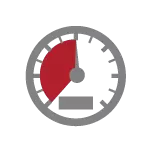 31mph |
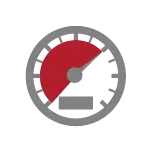 40mph |
11mph |
|
Top Speed while in active track |
13mph |
22mph |
Not Available |
|
Stated Signal Range |
1.2 Mi (1.6 km) |
4.3 Mi (7 km) |
80 Meters (100 MAX)0.049 Mi (.060 Mi) |
|
Battery Size |
1480 mAh |
3830 mAh |
1150 mAh |
|
Flight Time |
16 Min |
27 Min |
12 Min |
|
Obstacle Avoidance & Sensors |
1 - 16ft.
Up to 6.7mph
|
2 - 50ft.
Up to 22mph
|
None |
|
Indoor Flight Sensor |
Up to 26ft. |
Up to 43ft. |
Indoor Positioning System (IPS) |
|
Drone Control |
DJI GO + Remote |
DJI GO + Remote |
Breeze Cam APP |
|
Shop Now |
SHOP NOW |
SHOP NOW |
.

